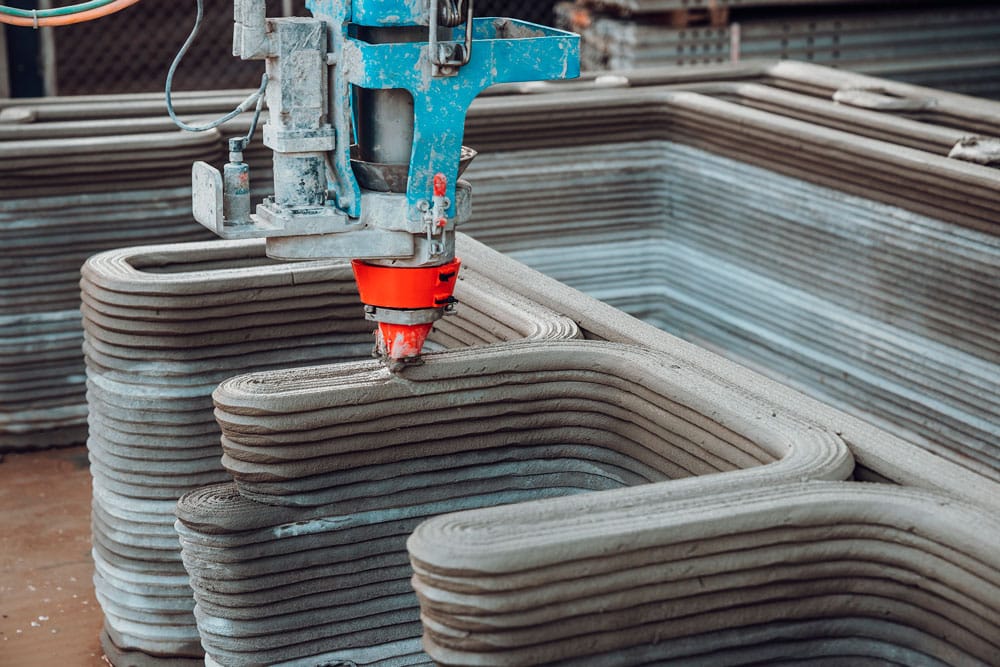It's been a while since concrete was just a mixture of cement, water, stone, sand, and other additives. Innovations emerge every year. Check out some trends:
3D Concrete Printing
With this technology, it is possible to manufacture small pieces to large structures. There is the possibility to produce virtually any structure with complex geometry, without the use of molds or anchoring elements, and with reduced resource consumption. A robot or mechanical arm is programmed to extrude the concrete gradually, creating a structure layer by layer based on a 3D model of the piece. One of the first structures built with this technology was a 3D printed concrete bridge, inaugurated in 2021 in the Netherlands.
Glowing Cement
This innovative material absorbs solar radiation during the day and uses it as a light source at night. Without the use of any other polluting energy, it is capable of saving on artificial lighting costs. A cement that glows in the dark can transform city lighting. The intensity of the light it emits can also be regulated through the additive dosage, and the color can vary from blue to green, according to the client's preference. For now, this cement costs four times more than regular cement, but widespread adoption could lower the price.
Sugarcane Concrete
A study conducted by scientists from Khon Kaen University and Suranaree University of Technology in Thailand proposes the use of sugarcane clarification residue to create concrete with amazing properties. This material is much lighter than traditional concrete, about 10%, and also contributes to reducing environmental impact. A study from the Federal University of Pernambuco (UFPE) also showed that sugarcane bagasse ash can improve the quality of concrete by refining pores, reducing external damage, and strengthening its pozzolanic properties. Another innovation is Sugarcrete, a sugarcane-based concrete produced by combining sugarcane bagasse with mineral binders. Structures built with this material are fire-resistant and can be disassembled and reused.
Colored Concrete
Colored or pigmented concrete is still a resource that is not widely explored by Brazilian professionals. The colors are obtained through the addition of dyes, preferably directly in the concrete mixer. The most commonly used colors are ochre, red, brown, and black, which provides better results when combined with white cement. Dyes in green and blue, for example, are only possible by combining chromium oxide and cobalt. However, this can cost 50% more. Currently, reurbanization projects are the ones that most utilize colored concrete. Theoretically, there is no performance difference compared to conventional concrete. Still, some professionals believe its resistance is lower, requiring an increase in the amount of cement in the mix. The main disadvantage is the cost, as the expense for colored concrete can be three times higher than traditional concrete.



